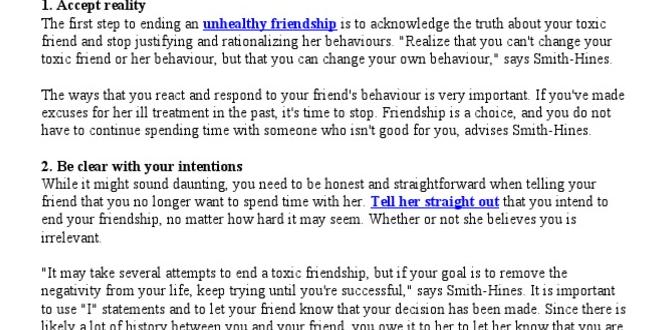Mastering communication in your relationships, whether friendships or romantic partnerships, is achievable! This guide provides actionable, proven tips to help you express yourself clearly, listen actively, and build deeper connections with a focus on understanding and respect for everyone involved, including specific advice for men navigating relationship conversations.
Have you ever felt like you and your partner, or even a close friend, are speaking different languages? It’s a common struggle, leaving us feeling misunderstood, frustrated, and disconnected. Many of us enter into relationships, whether platonic or romantic, wishing we had a secret manual for navigating those tricky conversations. The good news is, you don’t need a manual, but you do need some proven strategies! This article will gently guide you through the essentials of great communication, offering practical, easy-to-follow tips that will help you build stronger, happier connections. We’ll cover everything from active listening to expressing your needs, ensuring you feel more confident and understood in all your important relationships.
Why Good Communication is the Cornerstone of Every Relationship
Think of communication as the plumbing of your relationships. If it’s working smoothly, everything flows. If it’s clogged or leaky, things can get messy fast. In friendships, it’s how we share joys and support each other through tough times. In romantic relationships, it’s the foundation upon which trust, intimacy, and mutual respect are built. When communication is strong, partners feel seen, heard, and valued. This understanding fosters a sense of safety, allowing both individuals to be their authentic selves.
On the flip side, poor communication can lead to a cascade of negative outcomes: misunderstandings snowball into arguments, unresolved issues fester, and eventually, resentment can build. This can leave both people feeling lonely even when they’re together. For men specifically, societal expectations can sometimes make open emotional expression feel challenging. Learning effective communication skills isn’t just about avoiding conflict; it’s about actively nurturing the bond you share and ensuring both partners feel truly connected and supported.
The Core Principles of Effective Relationship Communication
Before diving into specific techniques, let’s explore the fundamental principles that underpin any healthy exchange. These aren’t complicated theories; they’re simple truths about how we connect with others.
- Honesty: Be truthful, but always with kindness and respect.
- Respect: Value your partner’s or friend’s perspective, even if it differs from yours.
- Empathy: Try to understand the other person’s feelings and point of view.
- Openness: Be willing to share your thoughts and feelings, and to receive theirs.
- Patience: Not every conversation will be resolved instantly. Allow space for processing.
These principles create a safe space for genuine connection. When they are present, conversations can be more productive and less stressful, leading to better outcomes for everyone.
Proven Tips for Better Communication in Relationships
Now, let’s get practical! These tips are designed to be easy to implement and offer tangible ways to improve how you connect with the important people in your life, with particular insights for men looking to enhance their communication skills.
1. Active Listening: More Than Just Hearing
Active listening is the art of fully concentrating on, understanding, responding to, and remembering what is being said. It’s not just about being quiet while the other person talks; it involves engaging with their message on multiple levels.
How to practice active listening:
- Pay Attention: Put away distractions like your phone. Make eye contact (if culturally appropriate and comfortable for both).
- Show You’re Listening: Nod, use short verbal affirmations like “I see” or “Uh-huh.”
- Seek Clarification: Ask open-ended questions to ensure you understand. For example, “Can you tell me more about that?” or “How did that make you feel?”
- Paraphrase: Briefly summarize what you heard in your own words to confirm understanding. “So, if I understand correctly, you’re saying…” This is a powerful tool to prevent misinterpretations.
- Avoid Interrupting: Let the speaker finish their thoughts before you jump in.
Many men, in particular, are solution-oriented. While helpful, sometimes your loved one just needs to feel heard, not fixed. Active listening helps bridge this gap.
2. Expressing Your Needs Clearly and Kindly
One of the biggest communication pitfalls is assuming your partner or friend can read your mind. Clearly articulating your needs, wants, and feelings is crucial for any healthy relationship.
Using “I” Statements:
This is a game-changer. Instead of blaming, focus on your own experience.
Instead of: “You never help around the house!”
Try: “I feel overwhelmed with the chores when I’m the only one doing them. I would really appreciate it if we could share the responsibilities more evenly.”
This approach is less accusatory and more likely to open a constructive dialogue. It focuses on the behavior and its impact on you, rather than attacking the person.
3. Choosing the Right Time and Place
Some conversations require focus and a calm environment. Bringing up sensitive topics when one or both of you are stressed, tired, or rushed is a recipe for disaster.
When to have important talks:
- When you’re both well-rested.
- When you have uninterrupted time.
- When you’re in a private, comfortable setting.
- Avoid bringing up big issues right before bed or leaving for work.
Sometimes, you might even need to schedule a “talk time” if your schedules are hectic. This shows respect for the conversation and the relationship.
4. Non-Verbal Communication: What You Say Without Words
Your body language, facial expressions, and tone of voice convey a significant portion of your message. Being aware of your own non-verbals and those of others is key.
Key non-verbal cues to consider:
- Facial Expressions: Are you frowning, smiling, or looking neutral?
- Eye Contact: Varies by culture and comfort level, but generally shows engagement.
- Posture: Are you leaning in, away, or sitting with crossed arms?
- Touch: A comforting hand on the arm or a hug can convey support.
- Tone of Voice: Is it harsh, soft, loud, or gentle?
A mismatch between your words and your non-verbal cues can create confusion or distrust. For example, saying “I’m fine” with a tense jaw and avoiding eye contact sends a conflicting message.
5. Managing Conflict Constructively
Conflict is inevitable in any relationship. The difference between healthy and unhealthy relationships lies in how conflict is handled. The goal isn’t to avoid conflict, but to navigate it without damaging the bond.
Strategies for constructive conflict:
- Focus on the issue, not the person: Attack the problem, not your partner.
- Take breaks when needed: If emotions run too high, agree to pause the conversation and revisit it later when you’re both calmer. Set a specific time to return to it.
- Seek compromise: Look for solutions that meet both your needs as much as possible.
- Apologize sincerely: When you’re wrong, own it and apologize without making excuses.
- Forgive: Holding onto grudges erodes relationships.
This is particularly relevant for men who may have been taught to suppress emotions. Learning to express feelings during conflict, rather than resorting to silence or anger, is a sign of strength and emotional maturity.
6. Praising and Appreciating
Don’t let appreciation go unspoken! Regularly acknowledging the positive things your partner or friend does strengthens your bond and creates a more positive atmosphere.
Simple ways to show appreciation:
- “Thank you for making dinner tonight, it was delicious!”
- “I really appreciate you listening to me vent earlier.”
- “You’re so good at [specific skill or quality], it inspires me.”
- “I’m so lucky to have you as a friend.”
Make it specific. Instead of a general “thanks,” say “Thanks for picking up my dry cleaning. That was incredibly thoughtful and saved me so much time.” Specificity makes the appreciation feel more genuine and impactful.
7. Seeking Understanding, Not Just Agreement
It’s important to differentiate between understanding and agreement. You don’t have to agree with your partner’s perspective to understand where they’re coming from. The goal of communication is often mutual understanding, which is a powerful form of connection in itself.
Asking questions to deepen understanding:
- “What is it about this situation that bothers you the most?”
- “Help me understand your perspective on this.”
- “What outcome are you hoping for?”
This approach can de-escalate tension and show that you value your partner’s feelings and thoughts, even if you don’t share them. This is a key element in how to communicate better in a relationship for men, moving beyond seeking to “win” an argument to truly connect.
Communication Styles: Understanding Differences
We all have different ways of communicating, influenced by our personalities, upbringing, and even gender roles. Recognizing these differences can prevent misunderstandings and foster greater empathy.
Consider this simplified look at potential differences, keeping in mind these are generalizations and individual variations are vast:
| Aspect | Tendencies in Communication | How to Bridge the Gap |
|---|---|---|
| Expression of Emotion | Some may express emotion more directly and verbally, while others might show emotion through actions or a more reserved demeanor. | Ask directly but gently about feelings. “How are you feeling about this?” or “What’s going on for you right now?” |
| Problem-Solving Approach | One might want to “vent” and be heard first, while the other may instinctively jump to solutions. | Clarify needs: “Do you want to brainstorm solutions, or do you just need me to listen right now?” |
| Directness vs. Indirectness | Some prefer direct, clear communication, while others might hint at needs or expect others to infer them. | Be clear but kind. If you’re more direct, soften your approach. If you’re more indirect, try to state your needs with a bit more clarity. |
| Conflict Handling | Some might confront conflict head-on, others might withdraw or try to avoid it. | Discuss preferred conflict styles. Agree on non-negotiables (like no yelling) and mechanisms for taking breaks when needed. |
Understanding these patterns isn’t about labeling individuals, but about creating space for more effective interaction. For instance, when a man is looking for the “best how to communicate in a relationship for men,” it often stems from a desire to connect effectively without feeling like he’s doing something wrong or failing to understand implied needs.
Tools and Techniques for Deeper Connection
Beyond the core principles, several specific tools can significantly enhance your communication.
1. The “Time-Out” Strategy
This is invaluable when a conversation becomes heated. Agreeing on a “time-out” signal or word allows both parties to disengage temporarily without it feeling like a rejection or abandonment. The key is to:
- Agree on the signal beforehand.
- State the need for a break: “I need to take a break from this conversation right now so I can calm down.”
- Agree on a specific time to resume: “Can we talk about this again in an hour/after dinner?”
- Crucially, actually resume the conversation. This prevents it from becoming avoidance.
This technique is especially helpful in relationships where tempers can flare, ensuring that discussions remain productive rather than destructive.
2. The “Speaker-Listener Technique”
Developed by relationship researcher Dr. Sue Johnson, this technique ensures one person speaks at a time and the other truly listens. It’s particularly effective for tackling difficult topics.
How it works:
- Designate roles: One person is the “Speaker,” the other is the “Listener.”
- Speaker’s turn: The Speaker shares their thoughts or feelings about a specific issue. They should start sentences with “I feel…” or “My perception is…” and avoid blame.
- Listener’s role: The Listener’s job is not to defend, explain, or interrupt. Their goal is to understand. They use active listening skills: paraphrasing (“So, you’re feeling X because of Y?”), reflecting feelings (“It sounds like you’re feeling frustrated.”), and asking clarifying questions (“What specifically about that bothered you?”).
- Exchange roles: After the Speaker has finished and the Listener has paraphrased and asked clarifying questions, they switch roles.
This structured approach ensures that each person feels heard and that misunderstandings are minimized. For men seeking practical communication strategies, mastering this technique offers a clear, step-by-step method for navigating sensitive discussions.
3. Regular “Relationship Check-Ins”
Don’t wait for problems to arise to talk about your relationship. Schedule regular, casual check-ins to discuss how things are going.
What to cover in a check-in:
- What’s going well in our relationship right now?
- What’s one thing that could be better?
- Is there anything you need from me that you’re not getting?
- How are you feeling overall about our connection?
These can be short, informal chats over coffee or a quiet evening. They act as preventative care for your relationship, addressing minor issues before they become major problems. For couples, this can be a core part of building lasting intimacy and understanding.
Common Communication Challenges and Solutions
Even with the best intentions, challenges arise. Here’s how to tackle some common ones.
Challenge 1: The Silent Treatment
When one person withdraws emotionally or refuses to communicate, it can be incredibly damaging. It signals a breakdown in problem-solving and can foster feelings of abandonment and resentment.
Solutions:
- Avoid mirroring: Don’t shut down in response.
- Gently try to re-engage: “I notice you’re quiet. Is there something you’d like to talk about when you’re ready?”
- Respect space, but set boundaries: “I understand you need space, but we do need to resolve this. Can we agree to talk about it tomorrow morning?”
- Focus on the impact: “When you don’t talk to me, I feel worried and disconnected.”
Challenge 2: Always Being Put on the Defensive
If one person feels constantly criticized or attacked, they’re likely to become defensive, which shuts down productive conversation.
Solutions:
- Use “I” statements consistently. This is the most effective antidote.
- Focus on behaviors, not character: Instead of “You’re so lazy,” try “I struggle when the dishes are left in the sink overnight.”
- Validate their feelings (even if you disagree): “I can see why you feel that way,” or “I understand that’s frustrating for you.”
- Take responsibility for your part: “I realize I haven’t been as helpful lately, and I’m sorry.”
Challenge 3: Assumptions and Misinterpretations
Assuming you know what someone means or feels is a common source of conflict.
Solutions:
- Ask clarifying questions: “When you said X, did you mean Y?”
- Practice paraphrasing regularly.
- Avoid mind-reading: If you’re unsure, ask directly. “What are you thinking?” or “What’s on your mind?”
- Check your own biases: Are you interpreting their words through a filter of past experiences or assumptions?
For men, learning to pause and ask for clarification rather than jumping to a conclusion or a defensive posture can be incredibly valuable in avoiding unnecessary friction in relationships.
Communication for Men: Navigating Relationships Effectively
Many men approach relationships with a desire to







